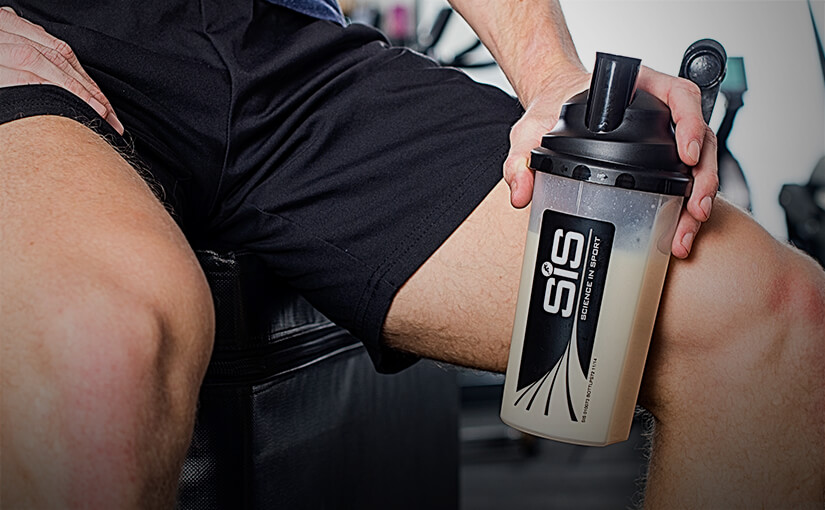Whether you’re looking for recovery solutions or fitness enhancements, our supplements are formulated with your wellness in mind. So, how can we ensure our bodies heal effectively after we’ve put them through the wringer? Patrick Dale, PT, ex-Marine, is a Training Editor with 30 years of experience in Personal Training and Strength & Conditioning. A former British Royal Marine, gym owner, and fitness qualifications assessor, he is dedicated to delivering informative, reliable content. In addition, Patrick is an experienced writer who has authored three fitness and exercise books, dozens of e-books, thousands of articles, and several fitness videos.
Yoga can refresh you mentally and psychologically while aiding your physical recovery. Lauren Bedosky is an experienced health and fitness writer who regularly contributes to top websites and national publications. You may be tempted to sit and do nothing on a rest day, but you’ll see better results from engaging in activities that promote overall well-being. Plus, unless you’re an elite athlete, your primary concern should be health and longevity and not beating your buddies at the gym. Honestly, I had to respond by saying “nothing,” because I had never heard about HMB and its application to improve recovery. The short answer is “yes,” you can consume carbs after a workout — even if you’re on keto.
- A well-balanced post-workout meal should include a combination of protein and carbohydrates.
- Most adults need about 7–9 hours, but if you’re in serious training mode, aim for the high end—or even 9–10 hours if you’re pushing mileage or intensity.
- This is even more important if you are performing endurance exercise day after day or trying to build muscle.
- If you’re not sure you’re meeting your protein needs through whole foods alone, it’s worth chatting to a sports dietician or nutritionist for advice.
- It took weeks of hard work, but I when I finally got over the hump, I felt nothing, just a strange, unfamiliar combination of flatness and fatigue.
- But they might not be great for your muscle development over time.
{
|}{
|}{
|}
Rule #2: Rehydrate Like It’s Your Damn Job
One simple way to recovery faster is by designing a smart workout routine in the first place. Excessive exercise, heavy training at every session, or a lack of rest days will limit your fitness gains from exercise and undermine your recovery efforts. The difficulty level of the exercise also plays a role in recovery. The greater the intensity of the workout, the more time your muscles need to recover from the damage. Sleep, nutrition, and stress will also affect muscle recovery time. That said, the average amount of time your body will need to recover is between 24 to 72 hours.

Research shows people who regularly use cold tubs or baths after intense training experience less DOMS (delayed onset muscle soreness). Active recovery means doing easy exercises to increase blood flow and help your muscles recover. Studies prove that sleep deprivation can impair muscle recovery by disrupting the body’s inflammatory response and hormone production, both of which are essential for muscle growth and repair. In that same vein, any gadget or tool marketed to help you recover faster probably isn’t worth your money, Machowsky says. “It’s not necessarily overhyped, but more of a cost-to-benefit ratio,” he says.
This is where the concept of minimal effective training dose comes in. When you’re done with your run and cardio cooldown, that’s when you might want to turn to some static stretching. Mandje suggests holding these stretches for 10 to 30 seconds and doing moves like toe touches (sitting or standing) and a standing quad stretch or calf stretch. Recovery starts even before your run, says Roberto Mandje, New York Road Runner’s senior advisor on engagement and coaching.
Hardcover Nonfiction
Revolutionary tools like https://megagrass.com/community/question-and-answer/forums/4133-general-questions/topics/2805151-mad-muscles-for-fat-loss-anyone-tried-it GENEFIT offer daily feedback on your workouts, track your fitness progress and injury risk, and provide lifestyle recommendations specific to your genetic makeup. Enhancing your recovery process is key to maximizing the benefits of your workouts and preventing setbacks like fatigue, soreness, or injury. Incorporate a proper cool-down session after each HIIT workout, as it helps lower your heart rate gradually and reduces lactic acid buildup, speeding up recovery.
{ |}
|}
If you’re feeling like you just can’t recover or you’re constantly tired, burned out, or can’t focus, then turn your attention to getting more rest. You may need to set some boundaries when it comes to screen time or creating a wind-down routine at night to make quality shut-eye happen. Training plans should alternate hard and easy days, vary weekly mileage, build long miles in gradual increments, and have one or more days off from running.
{ |}
|}
For example, if you just ran several miles at your maximum speed, your active recovery might consist of a few minutes of slow jogging or walking. If you’re working out often and/or at a high-level, you’re even more likely to experience the pain of sore muscles. On an off-day, our goal is to add funds back into our energy bank account to make more withdrawals in the future. Adequate sleep, proper nutrition, and time are all necessary ways to replenish those funds. Without those three components, your energy and performance will undoubtedly suffer.
Embrace the foam roller

Sometimes your body needs a break from all activity, and that’s OK. After all, «Rest is the foundation of recovery, as it allows the body to fully repair and adapt to the stresses of training», Silva says. This causes micro trauma and tiny tears within them that require healing, and is what causes DOMS. Put simply, DOMS is just your body adapting to a different type of physical demand. If you make some of these changes to your routine and still find you’re sore after every workout or the pain lasts for extended periods of time, consider speaking with a healthcare professional. When it comes to levelling up your recovery routine, some people love cryotherapy (cold exposure, like freezing cold) and contrast therapy (alternating between hot and cold temperatures in a single session).
Now, though, new devices are coming on the market that take that basic tactic to a new level. Massage guns are another favorite tech toy that can help with recovery. They use percussive force to release tight muscles and ease soreness. Different trainers have different philosophies when it comes to training. Many agree you should leave your workout session feeling challenged but not completely exhausted.
{
Black Health
|}
Once she started paying attention to her post-workout routine, Cockrell, a two-time U.S. Olympian and Olympic silver medalist, says she saw her fastest times yet. Check out our fitness section, with guides including the 5 best ab exercises for a flat stomach, the best hula hooping workout tips, and how to use resistance bands with tips from fitness experts. Alternatively, you could treat yourself to a professional massage. Sports massages are specifically designed for individuals who engage in regular workouts and will help boost muscle performance and relaxation.
Besides lubricating joints to help ward off aches, proper hydration also helps regulate body temperature and prevent muscle cramps and dizziness. Plus, you need enough flow to shuttle all the nutrients that promote recovery to your muscles, heart, brain, and more. The last thing you want to do after a hard workout is to put in even more effort or work, but that’s exactly what you should do. “Take at least five to six minutes to focus on your breath as you stretch out the major muscles you just worked,” says Sara Farias, a personal trainer who specializes in HIIT and strength workouts. If you’re serious about becoming bigger, stronger, leaner, and overall healthier, your training will only be as effective as the recovery interventions that you use. The more effective your recovery, the quicker you can get back into the gym and do it all over again.
Getting enough quality sleep is one of the best things you can do for your physical, emotional, and mental health and wellbeing. Ideally, you should eat in the first minutes after your workout, which is when your body will most effectively use the nutrients to fire up your muscle recovery. Too much sweat, though, and you’ll risk losing electrolytes such as chloride, magnesium, potassium, and sodium—all essential to optimal muscular functions.
Mallory stays on top of her continuing education in fitness, as well as the latest science in wellness. As a freelance writer, Mallory’s work appeared in Women’s Health, Self, Men’s Journal, Reader’s Digest, and more. She has also held staff editorial positions at Family Circle and Shape magazines, as well as DailyBurn.com.
